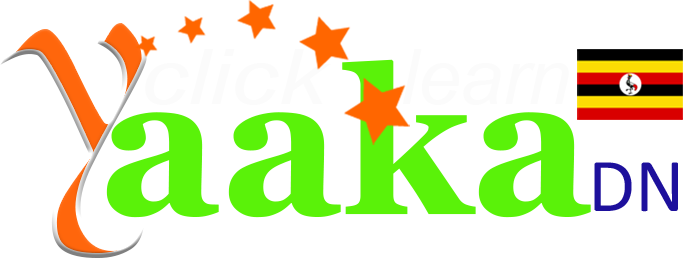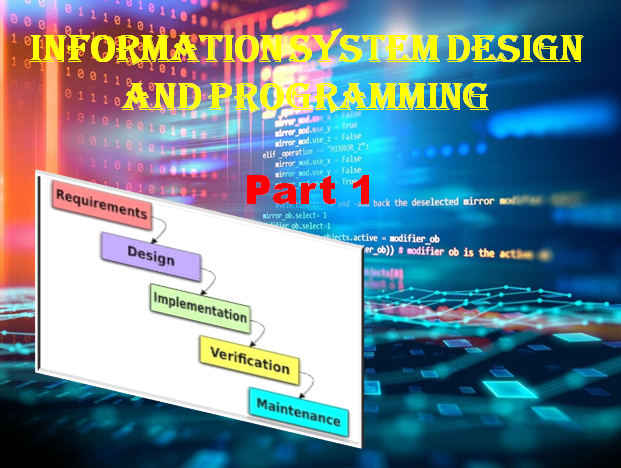No products in the cart.
100
INFORMATION SYSTEM DESIGN AND PROGRAMMING Part 1 DOWNLOAD TO ACCESS THIS COURSE Course Aims This course is designed as an …
INFORMATION SYSTEM DESIGN AND PROGRAMMING Part 1
DOWNLOAD TO ACCESS THIS COURSECourse AimsThis course is designed as an introductory course to systems analysis and design. The course presents an overview of information systems and the systems development life cycle for the analyst. Course emphasis will then be on tools and techniques that the programmer and analyst can use to develop information systems.Classical and structured tools for describing data flow, data structures, process flow, file design, input and output designs and program specification will be applied to constructing and documenting systems.The course will survey other important skills for the analyst, such as interviewing, data communications, project management and cost-benefit analysis.This course reflects the information explosion of recent years, the new technological advances in information systems, and the exponential growth in electronic business processes.The course provides extensive and comprehensive coverage of systems development techniques for the redesign of core information systems.Thus the major goal of this course is to prepare future analysts, programmers, managers and consultants for the delivery and evaluation of IT-enabled process redesign projects.Additional goals include: An understanding of the systems development life cycle and alternative development methodologies, mastery of communication, project management, feasibility and cost analysis tools, mastery of analysis and design modeling techniques.• An understanding of systems development tools available to analysts.• The development of structured and object-oriented modeling skills.• An understanding of system design issues.• An understanding of application architectures and networks.• An understanding of the application development process.• A thorough understanding of system implementation issues.• An understanding of how IT supports business requirements in changing environments.CIT 721 INFORMATION SYSTEMS DESIGN AND PROGRAMMING• An understanding of IT development and trends.• An understanding of legal and ethical considerations.• Promotion of critical thinking.Course ObjectivesStudents will be able to:• Identify the organizational roles involved in systems development.• Identify, compare and contrast several approaches to systems development.• Identify, discuss and apply the SDLC phases.• Identify the skills necessary to become a systems analyst.• Discuss the process of project management.• Describe CASE and its role within the SDLC.• Discuss corporate strategic planning and information systems planning.• Prepare, discuss and present a Statement of Work, Baseline Project Plan, and other SDLC phase deliverables.• Identify various methods for assessing project feasibility.• Select appropriate tools for determining systems requirements.• Prepare selected process models, logic models, data models, and object models.• Describe alternative design strategies.• Discuss object-oriented analysis and design.• Discuss Rapid Application Development.• Design inputs and outputs for a system.• Discuss several approaches to implementation.• Discuss the importance of systems maintenance.Course Currilcum
- ISDP1: System Concepts- Introduction to Systems Pt. 1 FREE 00:40:00
- ISDP1: System Concepts- INFORMATION CONCEPTS unit 2 FREE 00:40:00
- ISDP1: System Concepts-INFORMATION SYSTEMS (UNIT 3) Unlimited
- Information systems are generally used in organizations to help provide for the information needs of the organization. An information system can be defined as: a set of interrelated components that collects, stores, and processes data from various sources to provide information necessary to support and improve the day-to-day operations in a business.
- ISDP1: System Concepts- SYSTEM ANALYSTS AND DESIGNERS UNIT 4 Unlimited
- ISDP1: System Concepts-SYSTEMS THINKING UNIT 5 Unlimited
- ISDP1: SYSTEMS APPROACHES- STRUCTURED INFORMATION SYSTEMS DEVELOPMENT UNIT 1 Unlimited
- ISDP1: SYSTEMS APPROACHES-SYSTEM ANALYSIS AND DESIGN IN END USER DEVELOPED APPLICATIONS UNIT 2 Unlimited
- ISDP1: Systems Approaches-SYSTEM DEVELOPMENT LIFE CYCLE UNIT 3 Unlimited
- ISDP1: Systems Approaches-THE SYSTEM DEVELOPMENT MATRIX UNIT 4 Unlimited
- INTRODUCTIONAn information or decision support system follows a definite life cycle. This life cycle, which has been mentioned in the previous unit as a rationale to SDLC, includes planning, analysis, design, and implementation. The components of the life cycle are similar to the steps of systems analysis and design.OBJECTIVESBy the end of this unit, you should be able to.Explain at least three stages of data processing.Describe the types of models used to explain data processing.Justify the most appropriate schematic model for data processing.
- ISDP1: Systems Approaches-REQUIREMENTS MANAGEMENT UNIT 5 Unlimited
- 1.0 INTRODUCTIONA system requirement is a description of an essential capability or constraint that pertains to the product performance, functional characteristics, and/or physical characteristics. Management of these requirements is essential to successful satisfaction of the user’s need.2.0 OBJECTIVESBy the end of this unit, you should be to:• Describe the mechanism of user requirements identification• Explain the components of system functions• Outline the detailed structure of baseline documents
- ISDP1: system methodologies-PROJECT SELECTION UNIT 1 Unlimited
- 1.0 INTRODUCTIONSystems analysts do not start working on any projects they desire. They receive a lot of requests from the management for starting different types of projects. When projects are formalized, the systems analysts, under the management’s direction, conduct a preliminary investigation to analyze the reasons for the request and collect various facts to respond to the request in a systematic way. Some projects are feasible, while others many not be feasible for various reasons.2.0 OBJECTIVESAfter going through this unit you will be able to:• describe different reasons for developing new systems projects. • state the different sources of project requests. • discuss how to select a project out of a number of project requests.
- ISDP1: system methodologies-SYSTEM INVESTIGATION UNIT 2 Unlimited
- 1.0 INTRODUCTIONDuring the life of any organization, there will be new problems, new needs, and a changing environment. These problems and needs call for the organization to investigate current procedures and systems. Are the existing systems adequate? Should a new system be developed, or should the old system be modified? System analysis and design attempt to answer these questions.2.0 OBJECTIVESBy the end of this unit, you should be able to:• Identify the four basic steps of system analysis and design cycle.• Explain the rationale of systems investigation.• Outline the steps in a formalized evaluation procedure.• Describe major internal sources of data.• Explain the sequences in data collection.• Enumerate the techniques of data analysis.
- ISDP1: system methodologies-SYSTEMS DESIGN UNIT 3 Unlimited
- 1.0 INTRODUCTIONWhile in systems analysis the focus is on identifying the needs of the organization, the emphasis of systems design is to develop a new system that helps to achieve the goals and objectives of the organization and overcomes some of the shortcomings and limitations of the existing system. If the problems are minor, only small modifications are required. On the other hand, major changes may be suggested by systems analysis. In these cases, major investments in additional hardware, software, and additional personnel may be necessary. Regardless of the complexity and scope of the new system, it is the purpose of systems design to develop the best possible system.2.0 OBJECTIVESBy the end of this unit, you should be able to:• Explain the process of interactive design• Outline the various design techniques in systems• Outline the various design considerations• Describe procedures design• Discuss system design alternatives
- ISDP1: system methodologies-COST-BENEFITS ANALYSIS IN SYSTEM UNIT 4 Unlimited
- 1.0 INTRODUCTIONIn a way, Cost Benefit Analysis (CBA for short) is the starting point of any system analysis. It is the procedure by which the worthwhile of a system approach is determined, without which there would be no effective idea of the costs and consequences of the new information system being contemplated.2.0 OBJECTIVESBy the end of this unit, you should be able to:• Explain the role of CBA in system analysis• Outline the steps of CBA• Explain the different types of CBA• Explain the mechanics of CBA
- ISDP1: system methodologies-TASKS IN SYSTEM DESIGN PHASE UNIT 5 Unlimited
- 1.0 INTRODUCTIONSince the system design is a group activity, one of the surest ways of ensuring the success is to identify and assign specific roles to each member of the development team.2.0 OBJECTIVESBy the end of this unit, you should be able to• List the specific tasks in the system design phase.• Outline the roles and responsibilities of each member of the design team

